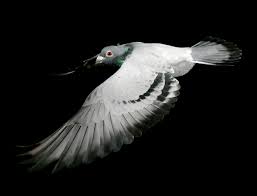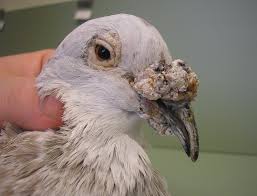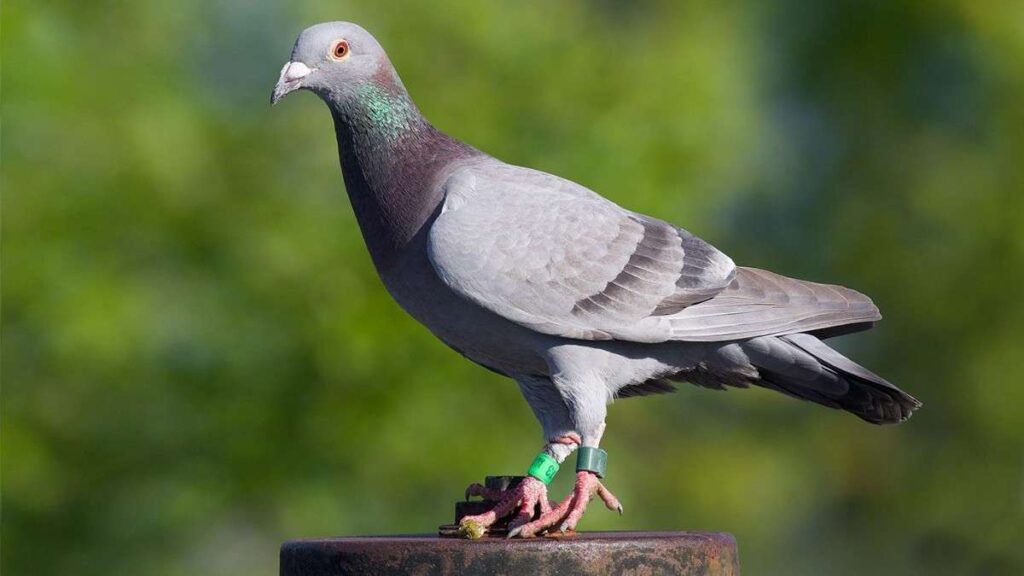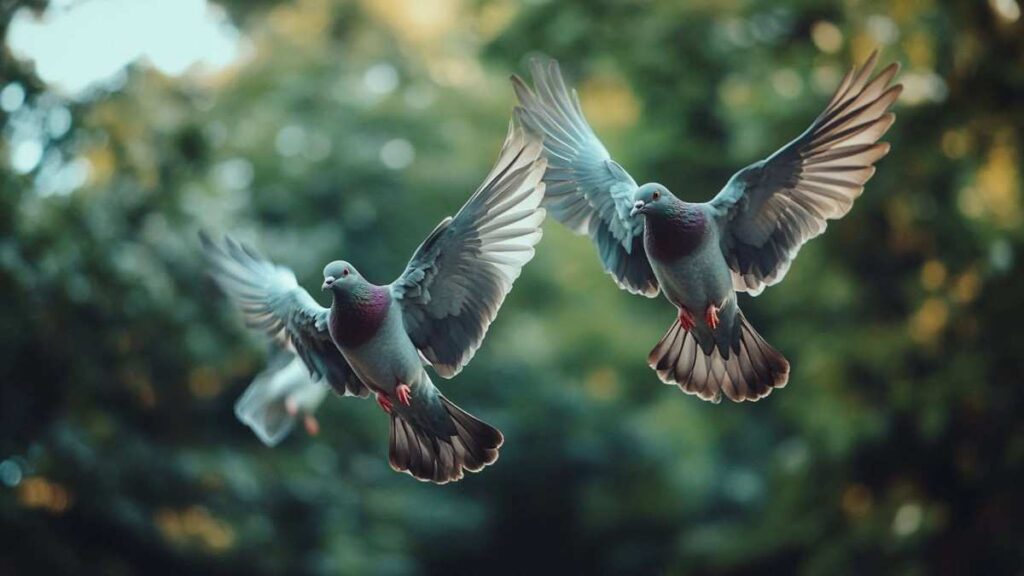Last updated on October 24th, 2024 at 09:41 pm

Pigeons are fascinating creatures, often found fluttering through city squares or perched on ledges.
These birds, scientifically known as Columba livia, have a rich history of interaction with humans, from being symbols of peace to serving as message carriers in wars.
Whether you’re a pigeon enthusiast, breeder, or simply curious, learning how to estimate the age of a pigeon can be a valuable skill.
This guide will walk you through the different ways to determine the age of a pigeon based on physical characteristics, behavior, and environmental factors.
1. Understanding the Development Stages of Pigeons

To accurately estimate a pigeon’s age, it’s essential to understand the different stages of its life cycle:
- Squab (0–30 days): A pigeon is considered a squab during its first month. During this period, it is nest-bound, relying on its parents for food and care.
- Juvenile (1–6 months): After leaving the nest, a pigeon enters its juvenile stage. This phase is marked by rapid growth and physical development.
- Adult (6 months and older): Once a pigeon reaches 6 months, it enters adulthood. Adult pigeons are fully grown, sexually mature, and show distinct adult features.
Each of these stages comes with specific markers, making it easier to estimate the bird’s age.
2. Feather Development: Key Age Indicator

One of the most telling signs of a pigeon’s age is the condition and appearance of its feathers.
As pigeons grow, their plumage changes significantly.
- Squab Feathers (0–4 weeks): Newborn pigeons, or squabs, are born nearly featherless. Around the second week, they begin to grow “pin feathers,” which are small, prickly shafts that eventually sprout into proper feathers. During this stage, the feathers appear soft and fluffy, and their wings will have underdeveloped feathers.
- Juvenile Feathers (4–12 weeks): By the time a pigeon is about a month old, it starts to look more like an adult, but its feathers are still less refined. Juvenile pigeons often have darker, duller plumage compared to adults. Their wing feathers may also seem shorter and less sleek.
- Adult Feathers (3–6 months and older): Adult pigeons have fully developed, glossy feathers. Their plumage looks smooth and well-arranged, which helps them fly efficiently. Male pigeons often develop more iridescent neck feathers as they mature, reflecting green and purple hues. Over time, these feathers become a strong indicator of sexual maturity.
3. The Beak and Cere: Changes Over Time

The beak, along with the cere (the fleshy area at the base of the beak), can also provide clues to a pigeon’s age.
- Newborn Squabs: Newly hatched pigeons have soft, flexible beaks, and the cere is almost non-existent. The beak color is often pinkish, indicating their immaturity.
- Juvenile Pigeons: As the pigeon grows, its beak becomes harder, and the cere starts developing. Around 1–2 months old, the beak is still slightly flexible but begins to darken in color. The cere also enlarges, becoming more noticeable but remaining soft and light-colored.
- Adult Pigeons: An adult pigeon will have a hardened beak, typically darker, although some species may retain a lighter color. The cere of an adult pigeon is more prominent, thicker, and takes on a whiter or more pronounced appearance. By the time the pigeon is fully mature (after 6 months), these features are well-developed.
Also Read: How to Tell the Age of a Baby Sparrow
4. Eye Appearance: A Window to Age

A pigeon’s eyes can also reveal its age.
Younger pigeons tend to have more muted eye colors, while adults display bright, vibrant hues.
- Squabs: Baby pigeons have dull, dark eyes that seem slightly swollen. Their irises may appear black or dark gray during the first few weeks.
- Juvenile Pigeons: By the time the pigeon is around 4–8 weeks old, the eye color starts changing. For many breeds, the iris lightens, moving from gray to pale yellow or brown. However, the overall appearance of the eyes remains somewhat cloudy or dull until they fully mature.
- Adult Pigeons: Adult pigeons often have vivid, clear eye colors. Depending on the breed, their irises may be bright orange, red, or yellow. The clarity and brightness of the eye are strong indicators that a pigeon is fully grown.
5. Legs and Feet: Subtle Age Signs

A pigeon’s legs and feet provide subtle yet useful clues to its age:
- Newborn and Juvenile Pigeons: In younger pigeons, the legs are generally pinkish and smooth. The scales on their legs are not fully developed, giving them a smoother appearance. The claws are also soft and less sharp.
- Adult Pigeons: As pigeons age, the skin on their legs becomes more textured and rougher due to the development of scales. Adult pigeons have stronger, more pronounced claws. Additionally, older pigeons may show signs of wear, such as slight discoloration or scaly patches on their feet.
6. Behavioral Cues: Young vs. Adult Pigeons

Apart from physical characteristics, behavior can also be a reliable way to estimate a pigeon’s age:
- Squabs: Baby pigeons remain in the nest for up to four weeks. During this time, they are entirely dependent on their parents and lack the ability to fly. If you find a pigeon that doesn’t attempt to fly or is stationary in a nest, it’s likely still a squab.
- Juveniles: Young pigeons may attempt short flights but are generally clumsy. They may also show reluctance to leave their roosts or perch for extended periods. Juveniles are also known to be more skittish and less confident around humans and other pigeons.
- Adults: Adult pigeons are confident flyers and spend a significant amount of time exploring and foraging. They interact more assertively with other pigeons and are less likely to display fearful behavior. During mating season, males may puff out their chests and coo loudly as part of their courtship behavior, a sign of sexual maturity.
See Also: How to Tell the Age of an Elephant
7. Molting Patterns: A Yearly Cycle

Molting is another useful indicator of age. Adult pigeons undergo an annual molt, where they shed old feathers and grow new ones, typically after the breeding season.
Juvenile pigeons, on the other hand, experience their first molt at around 4–6 months old.
By observing the molting process, you can gauge if the pigeon is a juvenile experiencing its first molt or an adult pigeon going through its regular molting cycle.
Conclusion
Determining the age of a pigeon is a nuanced process that requires a combination of visual observation and behavioral understanding.
By examining the feathers, beak, cere, eyes, legs, and even the bird’s behavior, you can estimate whether the pigeon is a squab, juvenile, or adult.
While it’s not always possible to pinpoint an exact age, these markers will help you make a well-educated guess.
Whether you’re caring for pigeons or observing them in the wild, understanding their age can deepen your appreciation for these remarkable birds.

Akash Singh is a finance enthusiast who shares valuable insights on various calculators.
